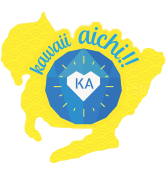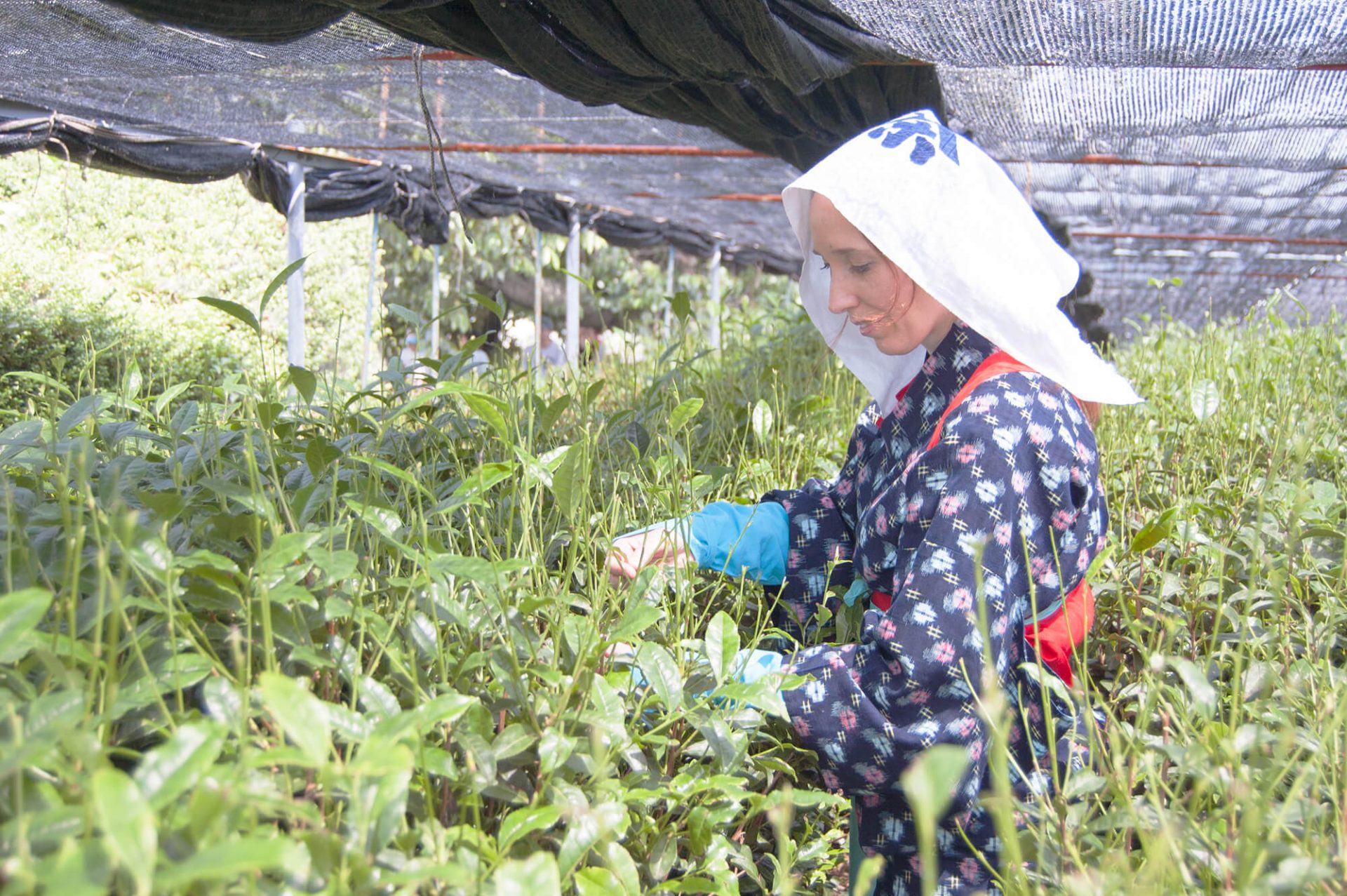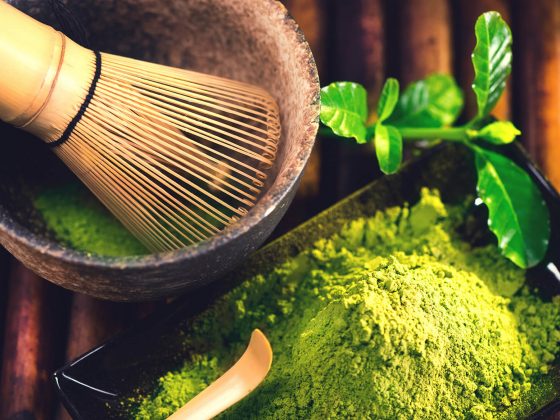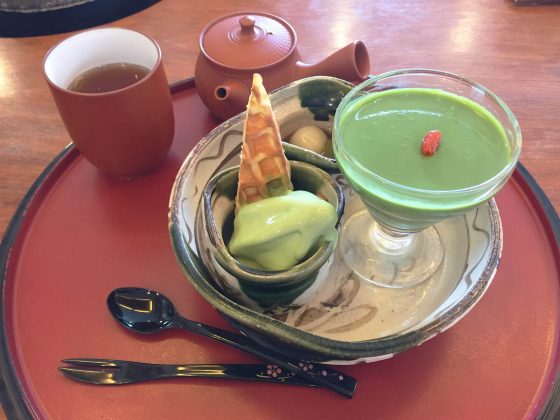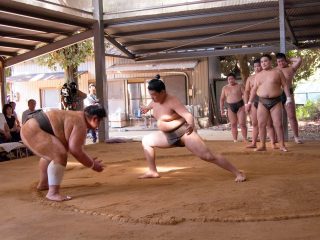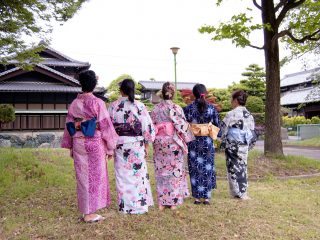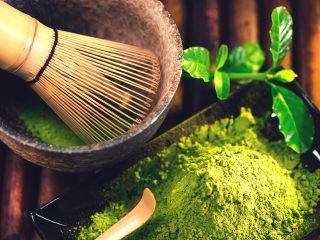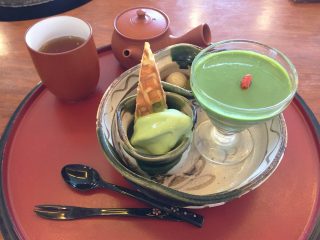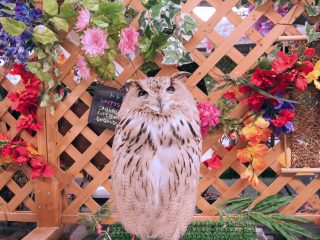From the harvest and collection of green tea to its consumption, Nishio is a complete paradise for tea lovers. To immerse yourself more in this rich culture, Nishio offers the opportunity to visit the tea factories and experience first hand how it is the collection of tea leaves in the fields.
To learn a little about tea history in Nishio, take a look at this post. And if you like sweets, surely this other post about the matcha sweets route will delight you.
The tea leaves harvest
The tea tree, from planting until its leaves begin to sprout, takes about five years.
At the beginning of April tea buds begin to grow. The fields are covered with black nets to protect from sunlight. This makes theanine, the flavor component, change to tannin, a component of acerbity (bitterness). It also produces the unique sweet flavor of matcha, called “Oika”, and the intense green color.
The harvest of tea leaves begins from day 88 (in Japanese “Hachiju-hachiya”), just as spring begins.
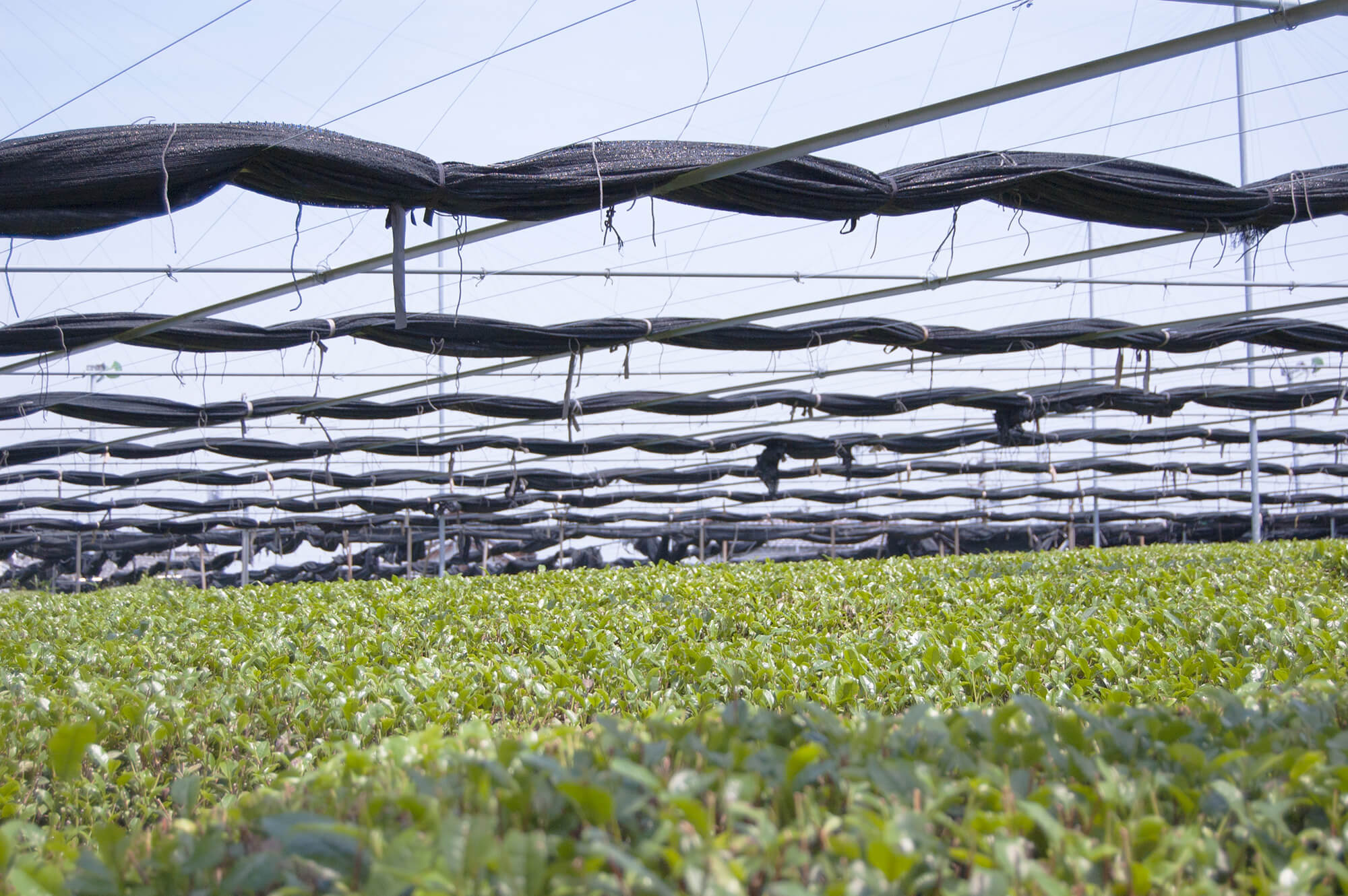
Experience how tea is collected (Chatsumi)
In Nishio there are several factories that offer the experience of collecting your tea. This local experience is open to all visitors during the month of May. On this occasion, this experience is carried out together with a group of Japanese and foreigners in the matcha Aoiseicha tea production factory. It takes about 3 hours and the content will explain it in detail below.
Arrival at the tea factory
From the Nishio train station you have to take a taxi to the factory. It’s 10 min. and the cost is about 500 yen. You can ask at the Tourist Office to call a taxi for you.
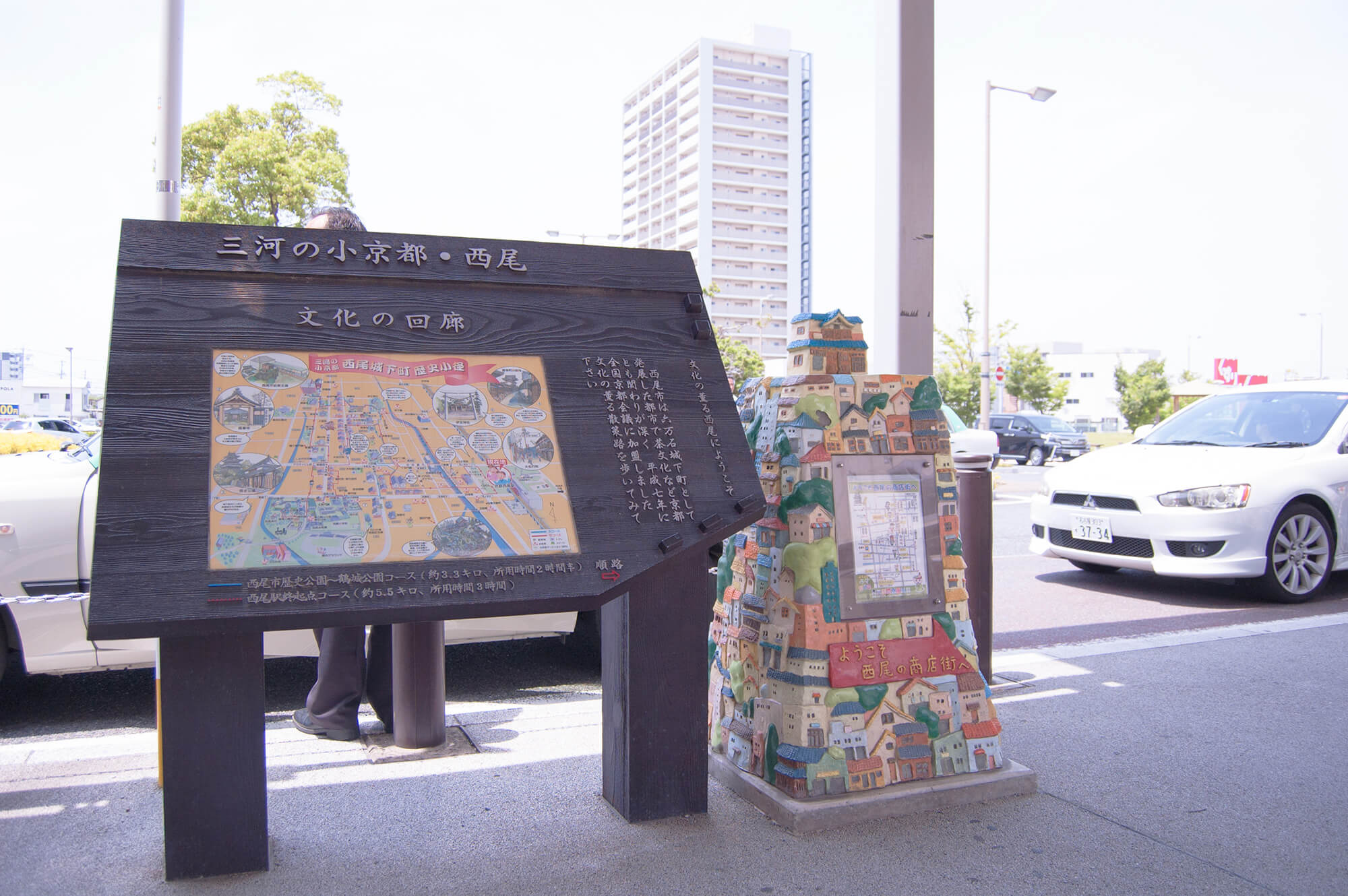
Once at the factory, you must pay for the tour. And once the payment is made, the guide takes you to the tea fields. The whole area of the surroundings are practically tea fields, factories and old houses.
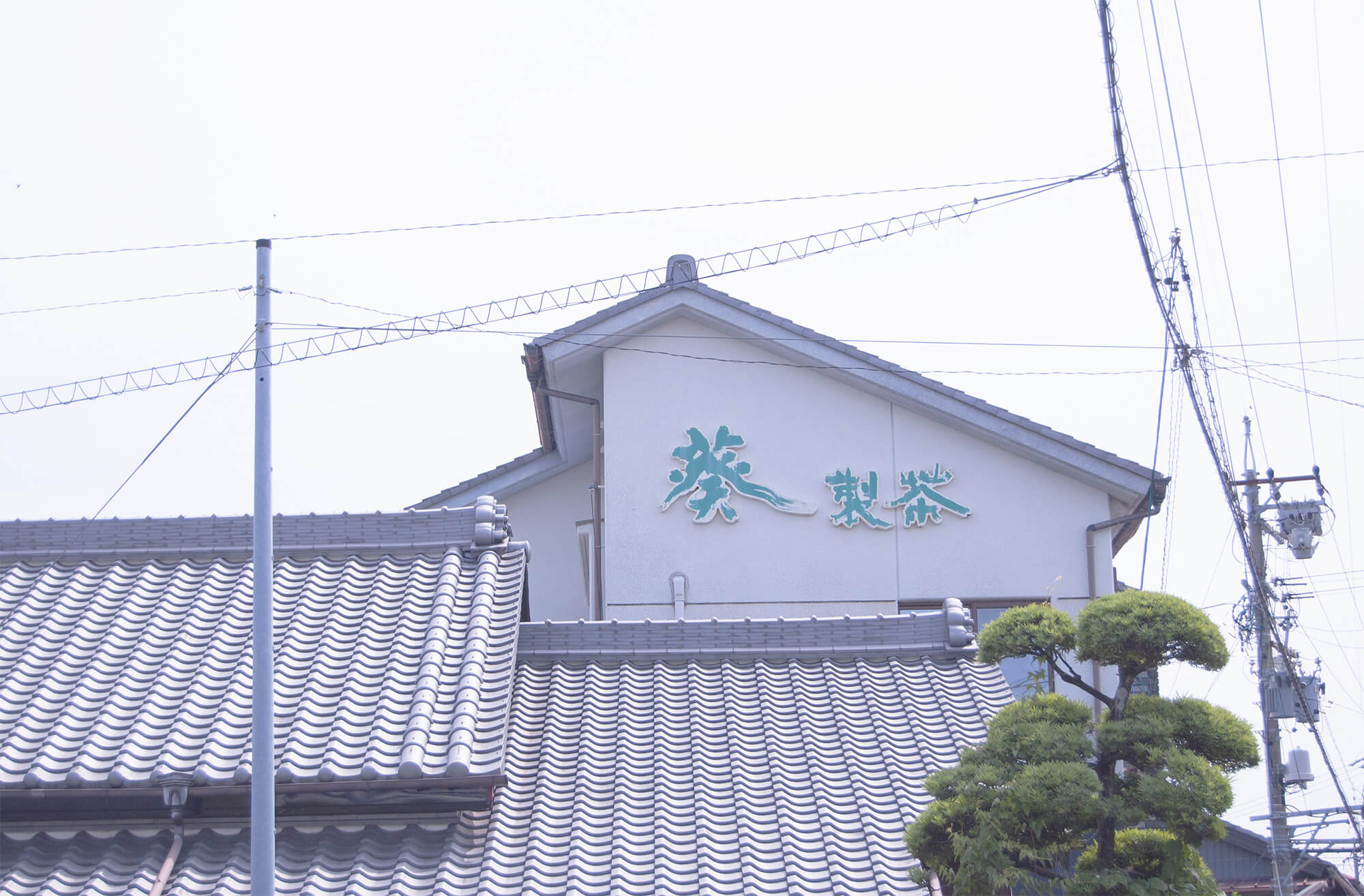
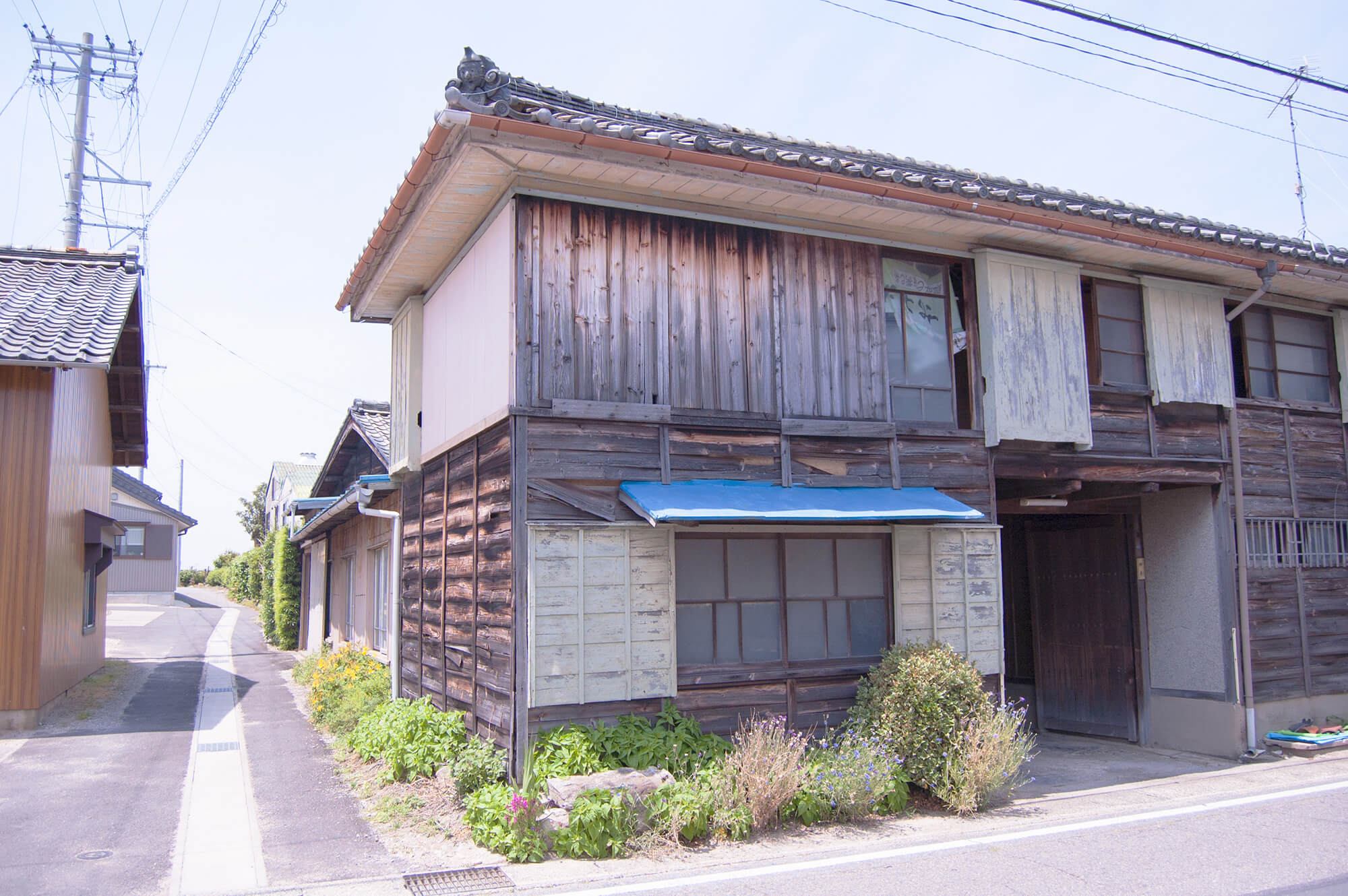
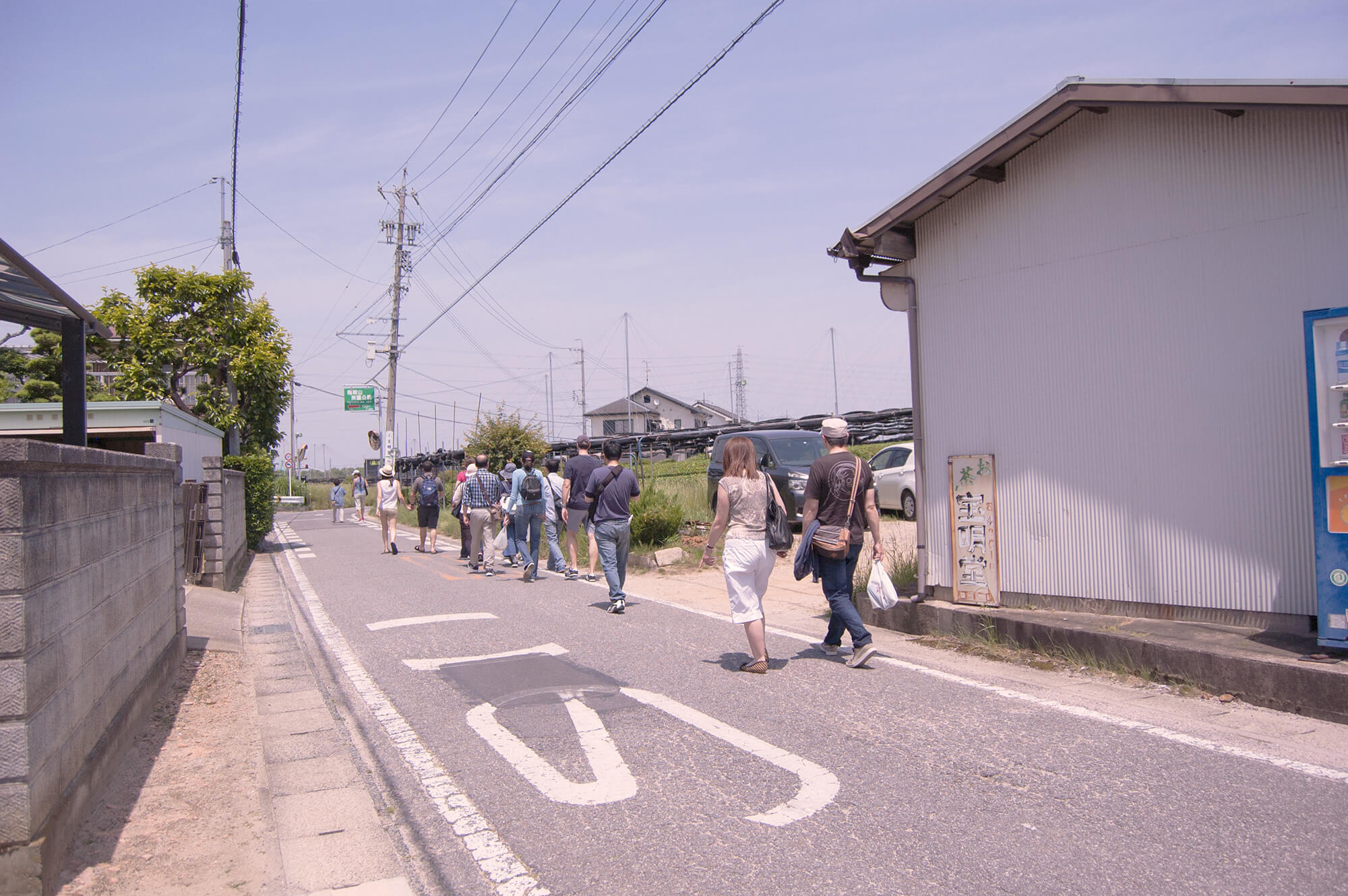
Once you arrive to the field, the guide explains about the process of the tea harvest and how to collect the leaves. Then, the guide distributes the utensils for the collection and a bottle of tea to drink during “the work”. To collect the leaves you only need 1 glove, for not to get your hands dirty, and a plastic bag, to keep the leaves. The collection takes half an hour and all the leaves you collect are for you, to take them home and cook them (in tempura they are very good) or to prepare tea.
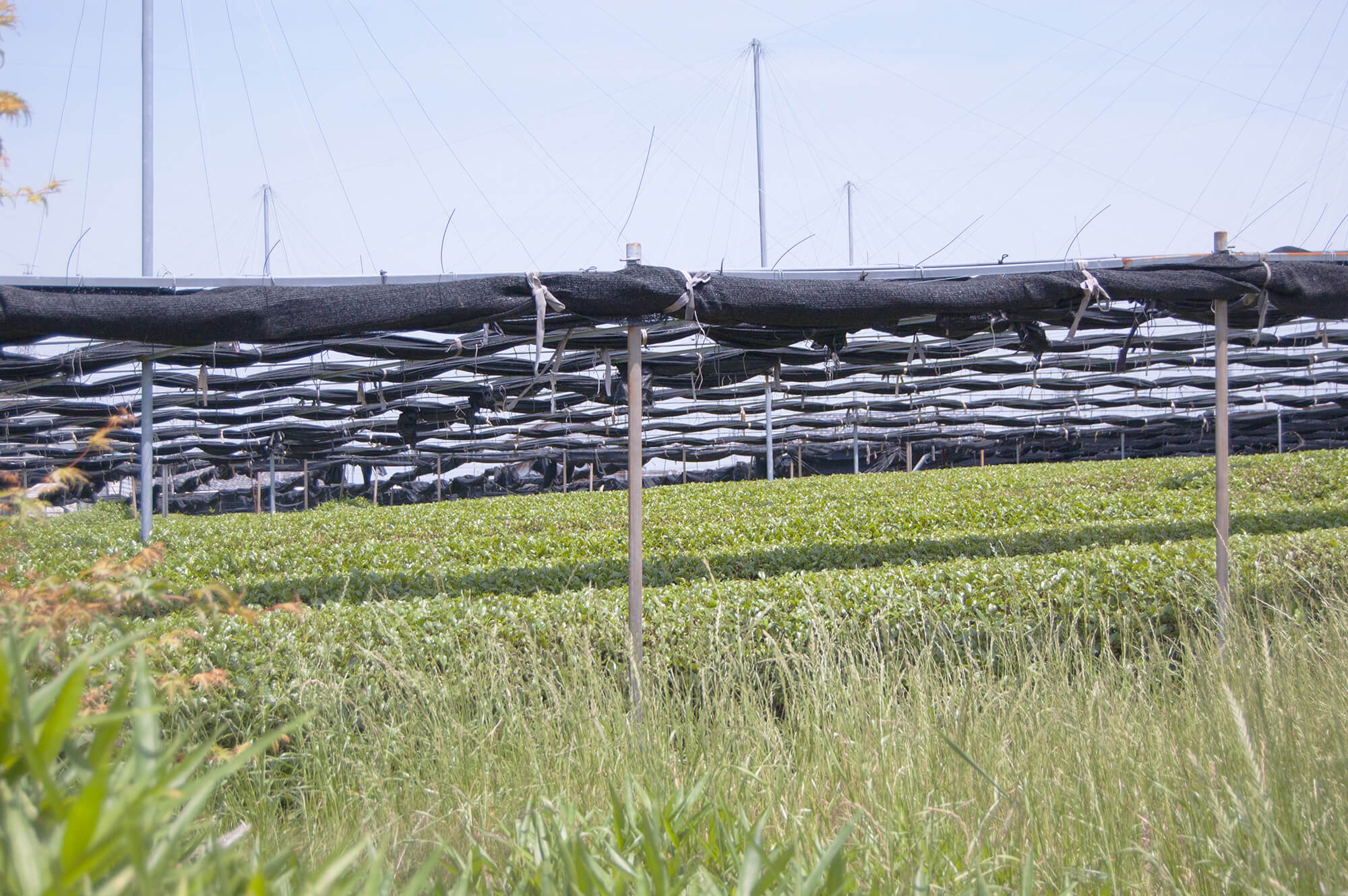
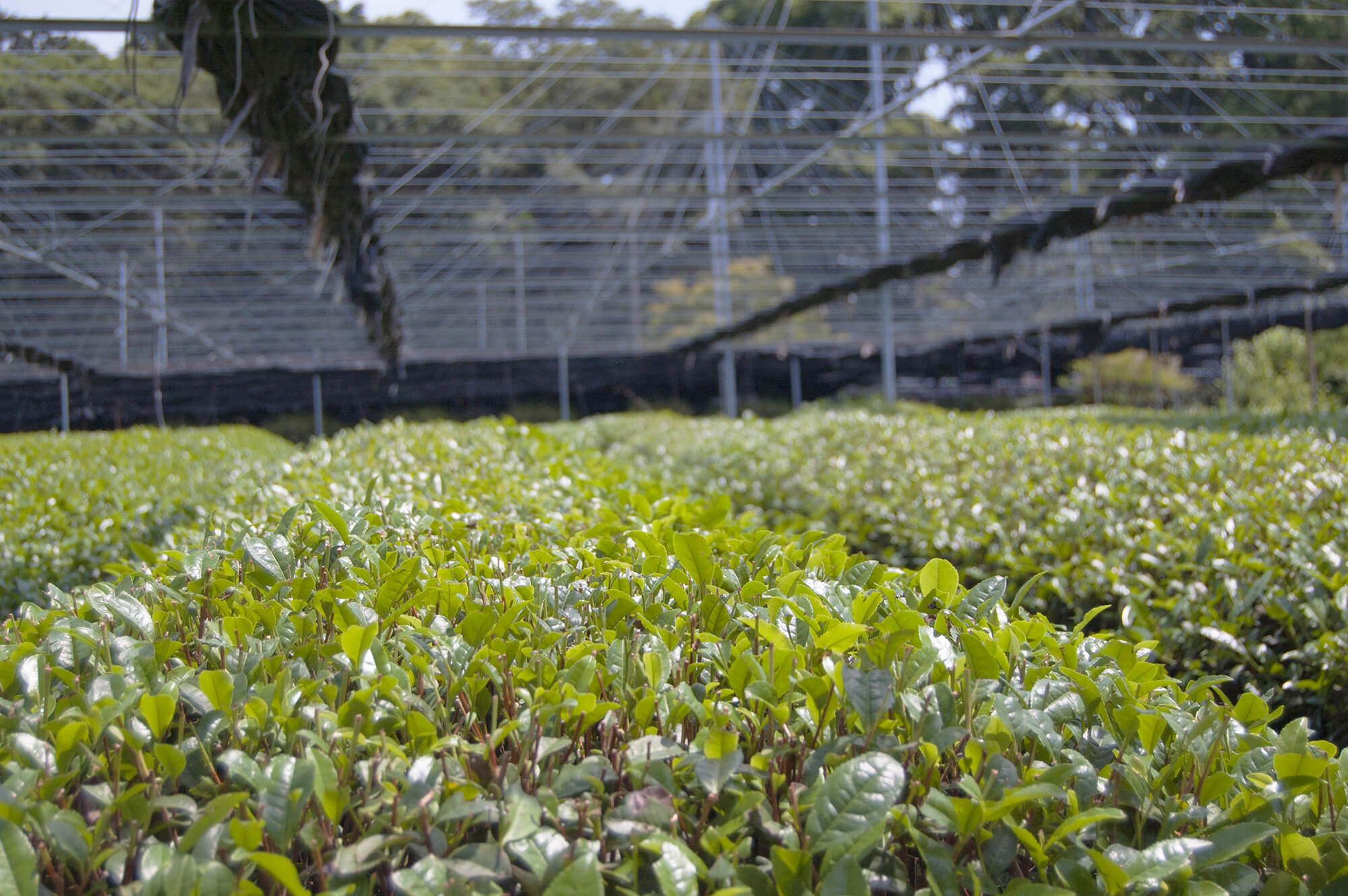
Let’s begin!
The way to collect the leaves correctly is to take the branch, and starting from below, discard the first long leaf (it is the oldest, the one that has grown before) and take the next leaf, which will be the youngest, that is the shortest. The smaller and greener the flavor is better. When you reach the top of the branch where all the young leaves are concentrated, with a single clean pull from the bottom up you take all the leaves. They are all ready to put in the bag. That’s it!. As time goes by it becomes easier and you can go faster. If you go in a group you can chat with people while you pick up the leaves. It is even more fun and enjoyable.
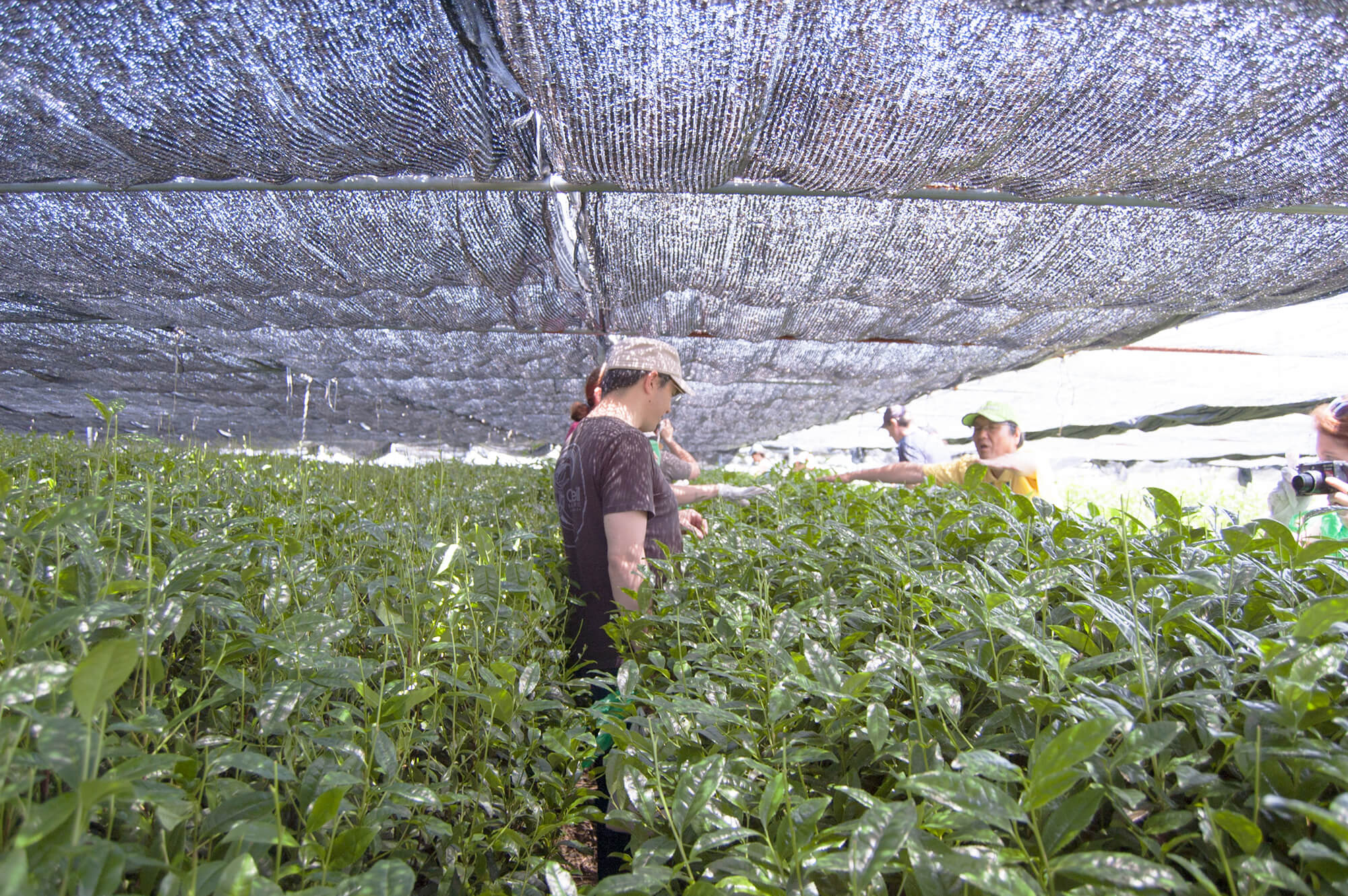
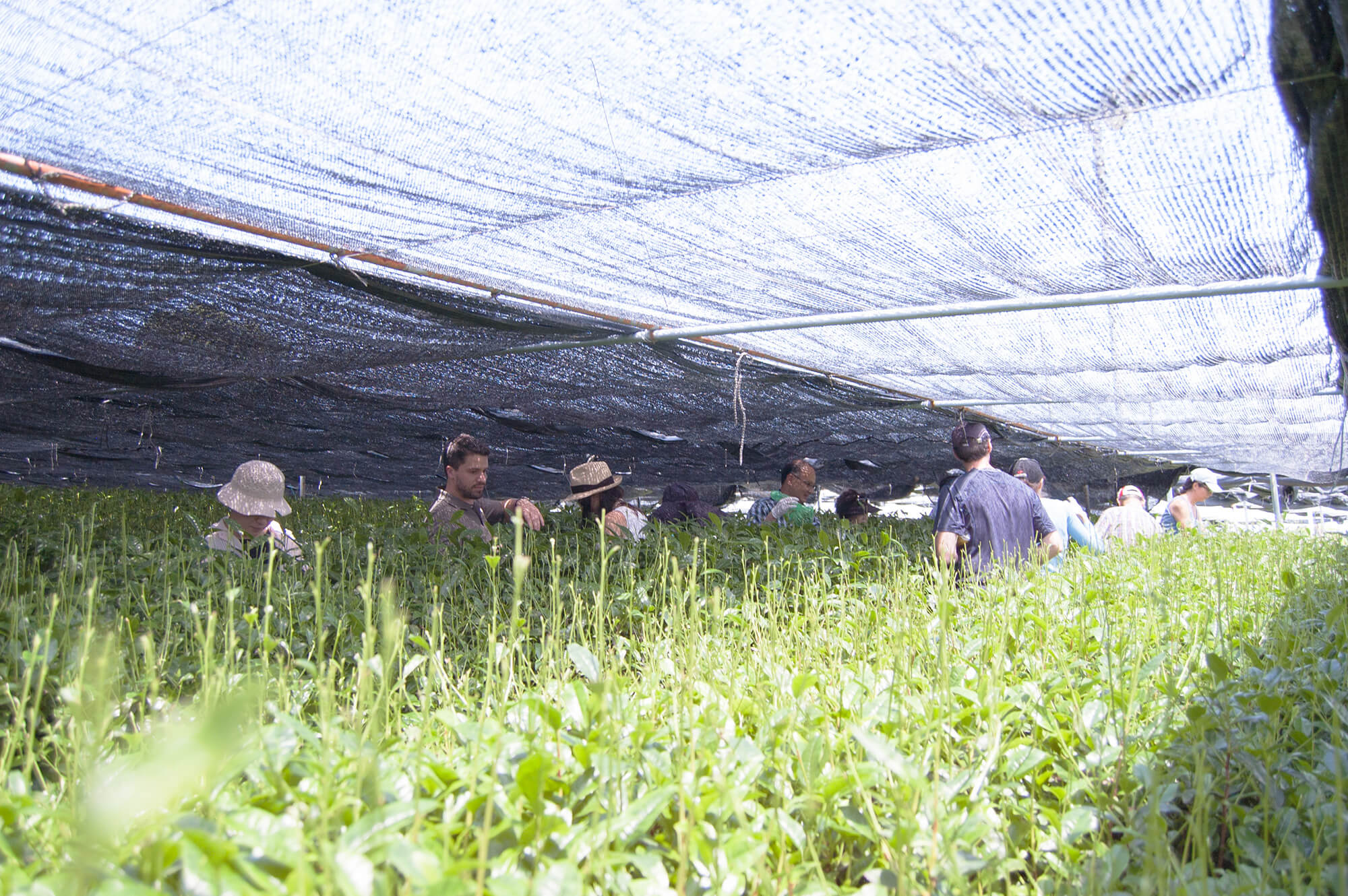
After the collection you can put on the typical costume called “Kasuri” and take pictures in the field. More than a serious job in the field seems like a tourist attraction.
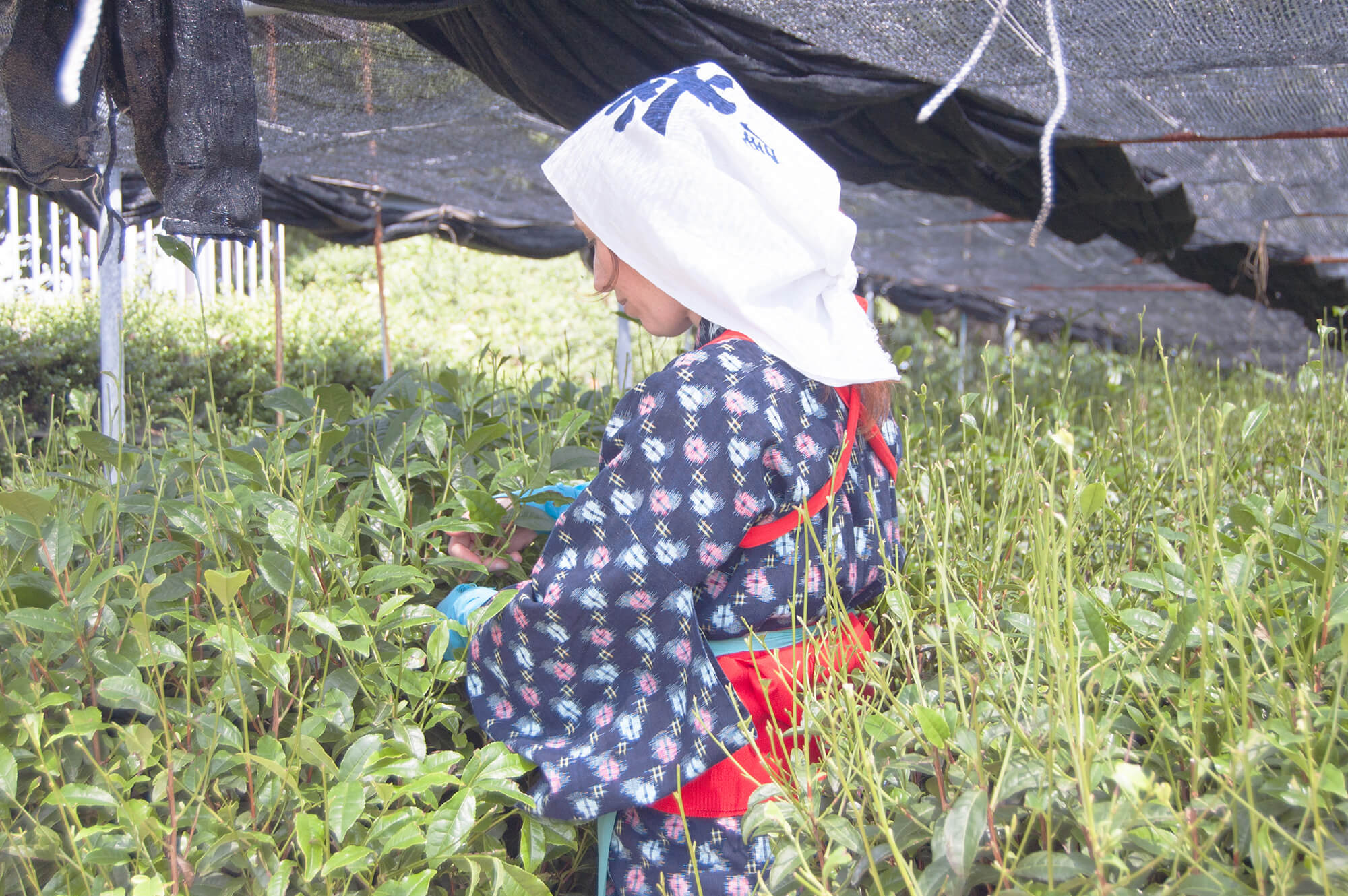
Visit to the tea factory installations
Back to the factory you start the visit inside the tea factory. The guide starts the route through the factory installations explaining the matcha process. The process is so interesting that I’m going to explain it to you here.
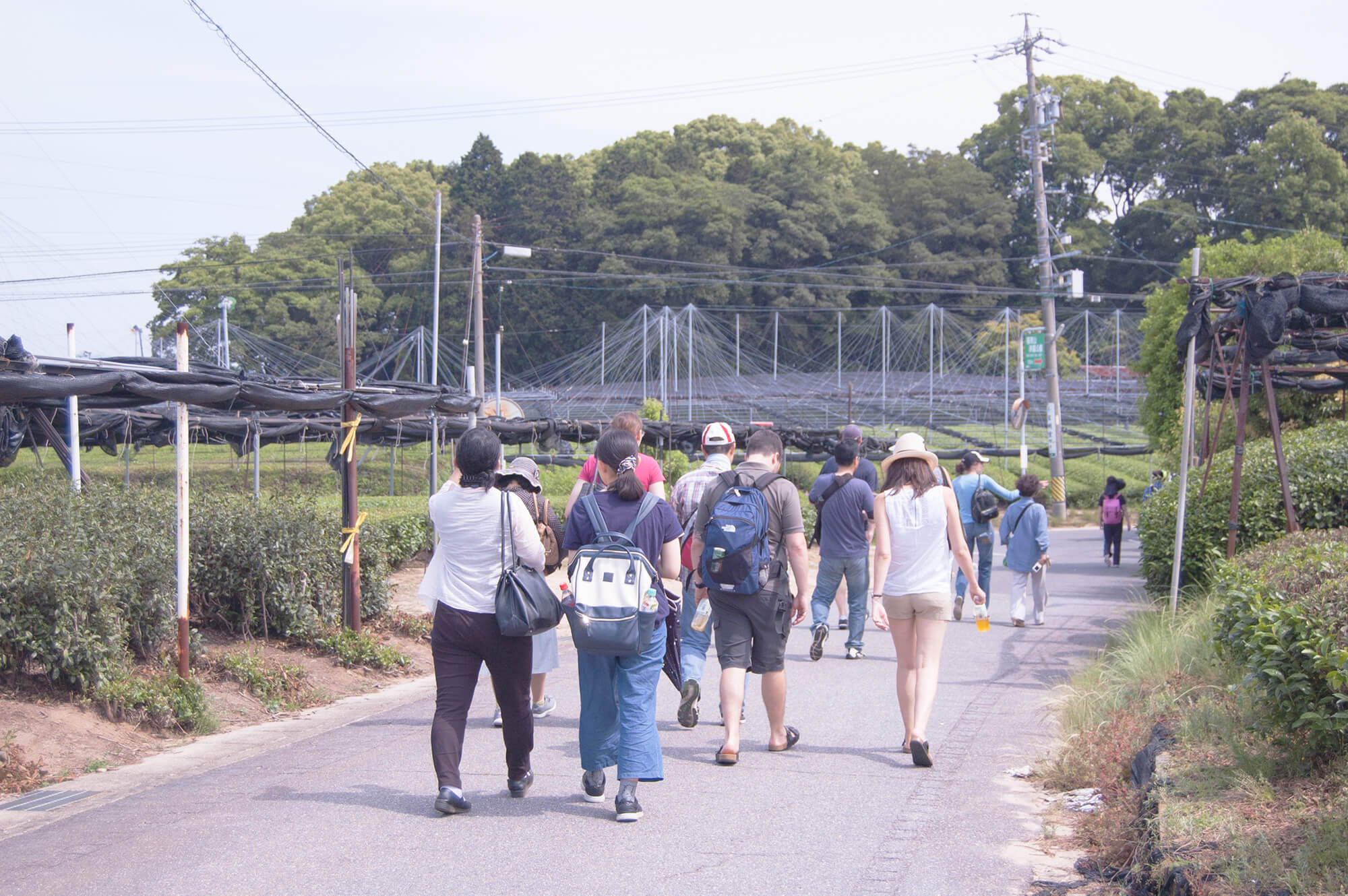
The collected tea shoots are taken to the processing factory. First the leaves are steamed at high temperature. This prevents the activities of the fermentation enzyme and makes it retain the bright green color of the tea. Then, the tea leaves are dried. To remove the water content slowly a large dryer is used. The leaves in this condition are called aracha or tencha aracha.
The stems and other impurities are removed from the aracha and only the part of the leaf rich in food is left.
The selection process begins (from aracha to tencha). This process is based on four important characteristics: size, shape, specific gravity, and surface characteristics of the particles.
The selected tencha is brought to the grind to obtain matcha. Formerly, the tea was ground by hand with a large stone grinder. Currently, these tea grinders are automated and are located in a room at constant temperature and humidity 24 hours a day.
Each grinder rotates 1 time per second, which means that it gives 60 laps per minute. The high class matcha for the tea ceremony is very carefully milled, so a tea grinder can only produce 40 grams per hour. As you can see in the photo, the whole room has acquired a green tone.
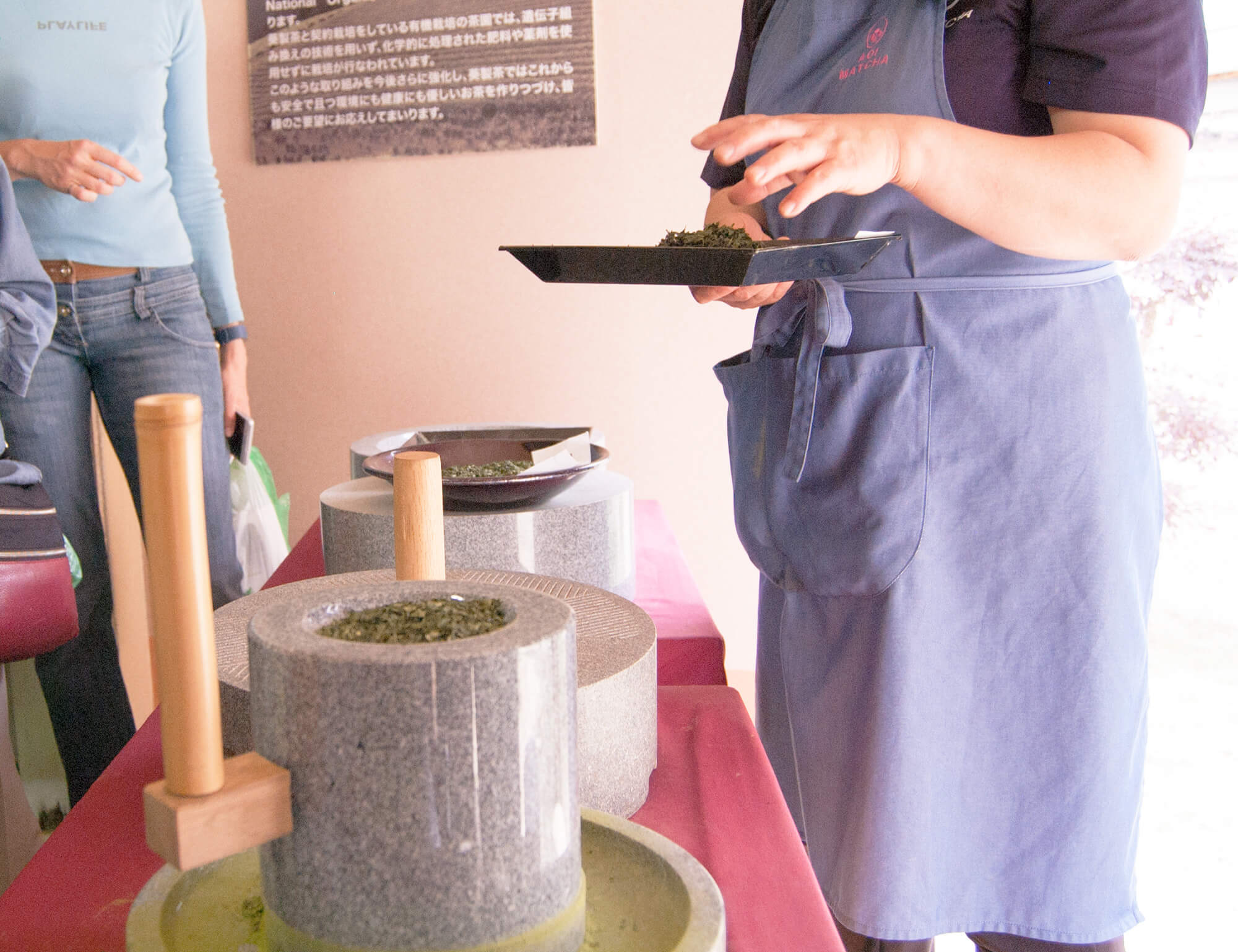
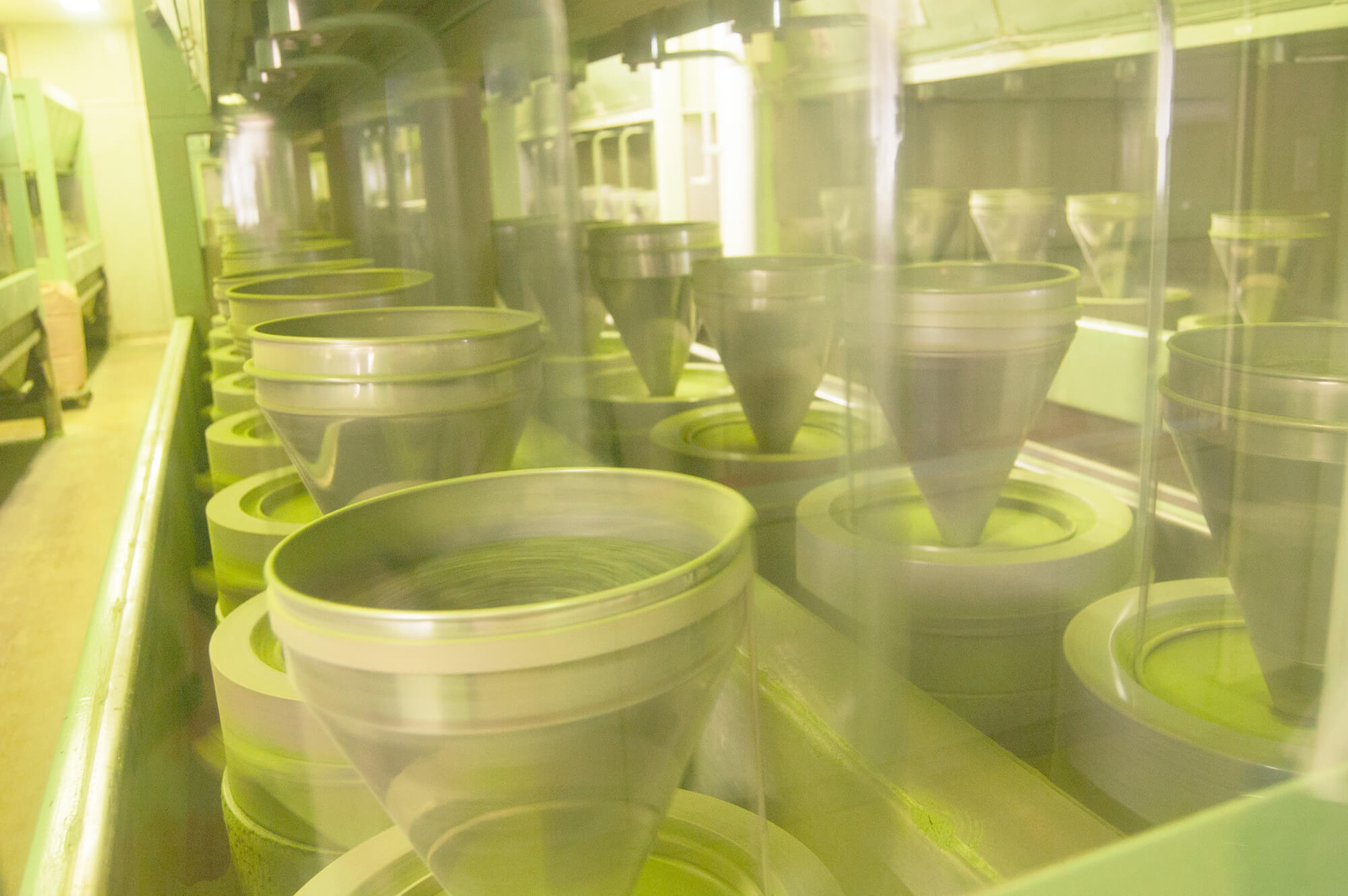
Tea Tasting and sweets
After the educational visit to the factory installations the guide takes you to the tea room. Here begins the tasting of 3 different types of matcha tea.
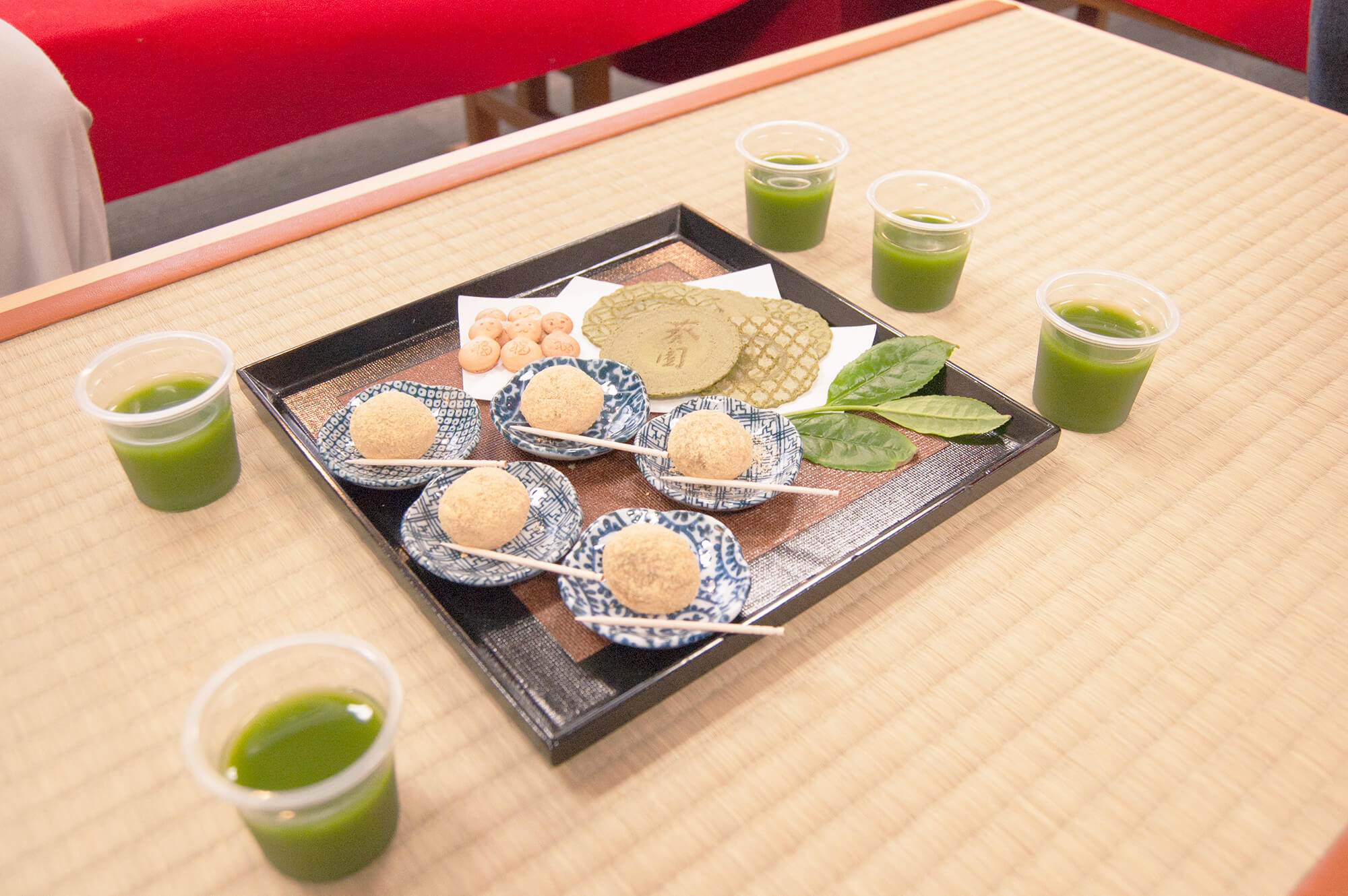
The first was a sweetened matcha. This matcha is the one that is currently consumed in Japanese homes. As the taste of matcha has a strong bitter taste, it is usually reduced with sugar and thus “becomes more drinkable”. Almost everyone in the group that was with me did not like this tea at all. Honestly, I didnt like it either. It was as if a large pack of sugar had landed in my glass.
The next matcha tea tasted mild and pleasant. I have to say that this was the one I liked the most. Not only for the taste but because it was cool and with the heat that was just what I needed.
The last one was matcha tea that is used for tea ceremony. Freshly prepared, it had a bitter and intense flavor. I had the special opportunity to also try one more variety of matcha called “koicha”. This variety has a denser texture, like a pure, and with an even stronger flavor than the one used for the tea ceremony.
And of course, to have a perfect balance with the taste of matcha tea they served typical Japanese sweets. There was warabimochi (it’s a gelatinous candy covered in kinako), an small cute fortune cookies, and matcha sable cookies.
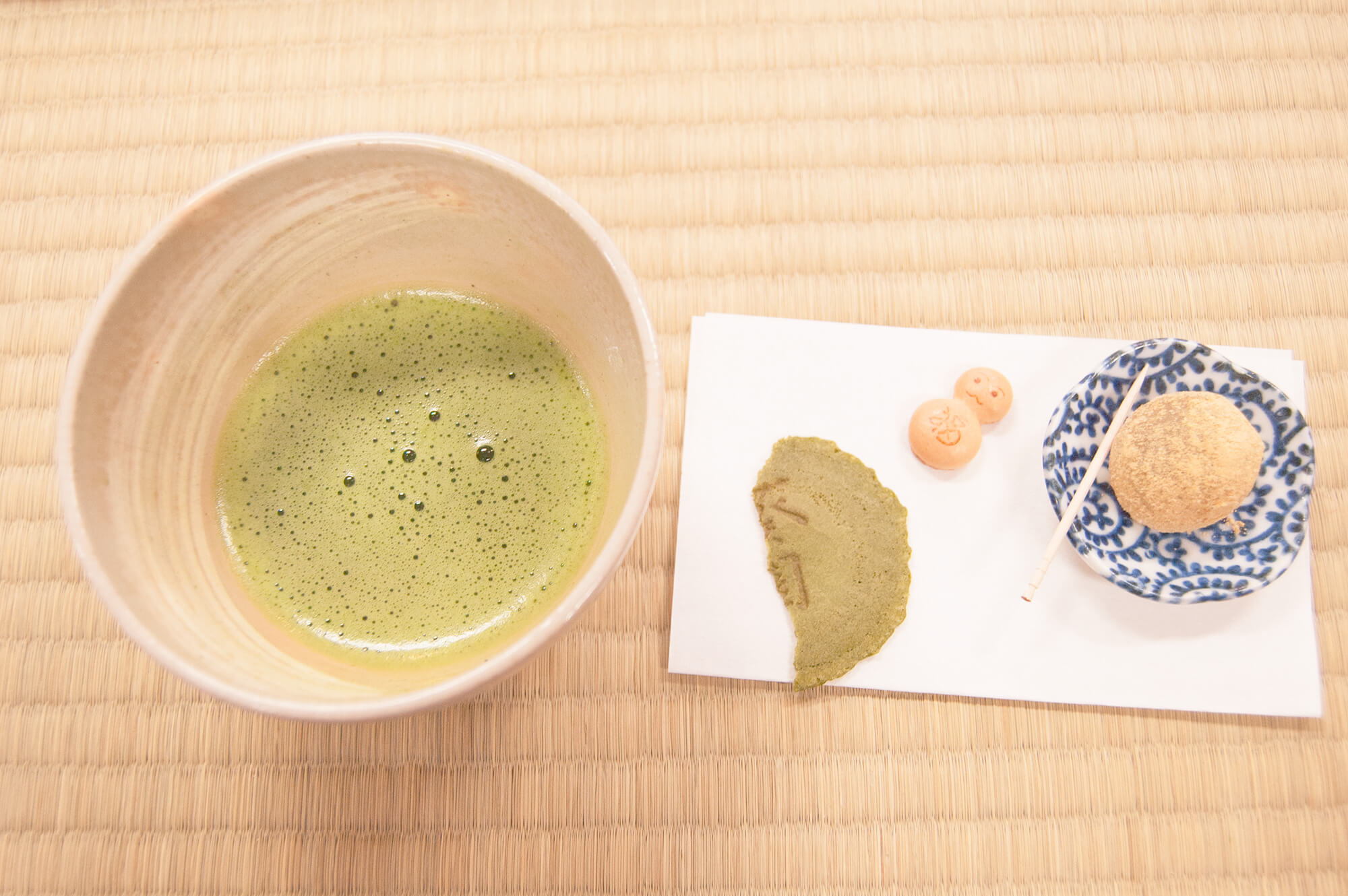
Shopping
To end the day, a must-stop is the mactha tea store to buy some tea souvenirs. The shop is selling different varieties of matcha tea, both powder and leaf. There are also utensils for the tea ceremony and boxes to store tea with beautiful Japanese pattern designs.
Travel tips
On May the weather begins to get hot and the humidity is pretty high. So, I recommend you bring cool and comfortable clothes. And don’t forget take a hat and some suncream. In case of rain the tour will be cancelled.
Contact to the Nishio Tourist Office and make the booking 3 days in advance. The reservation period begins at the end of March.
My personal opinion about this experience
This experience is a special opportunity to get into the tea culture and learn about its preparation more closely.
Although the service and treatment was very good, the preoblem is that it is practically oriented to Japanese people. The orientation and the leaflets are only in Japanese. It would be great if at least the brochures were translated into English and thus could be more understandable for participants who don’t understand or don’t speak Japanese.
Getting Here
By train (54 min.).
From the Nagoya Train Station, take the Meitetsu train line to Toyohashi to Nishio Station.
General Information
Tour hours
The first one is at 9:45
The second one is at 12:45
Reservations
Nishio Tourism Association (Monday to Friday, except holidays)
TEL: 0563-57-7882
Nishio Tourist information office (Saturday, Sunday and holidays):
0563-57-7840
You can also visit the following websites of the factories that offer this experience:
– Aiya Nishio Matcha Museum Wakuwaku
Online booking
– Aoiseicha
Informative page to visit the factory (reservation by phone)
– Shokakuen
Informative page to visit the factory (reservation by phone)
Prices
2200 yen per person
For groups of more than 15 people, 2,000 yen per person
* Maximum 40 people per group
